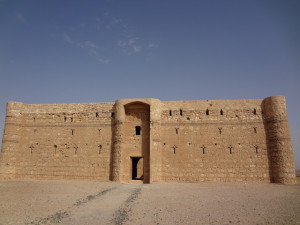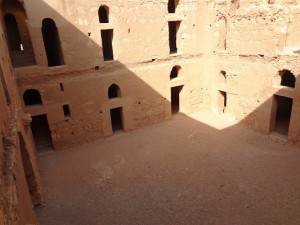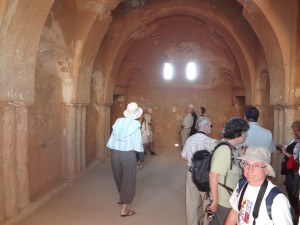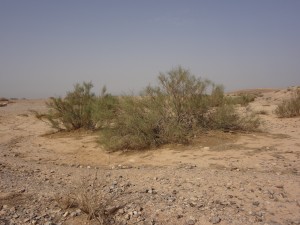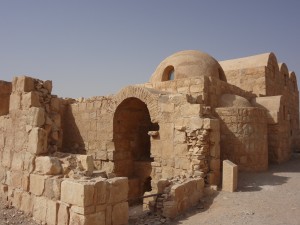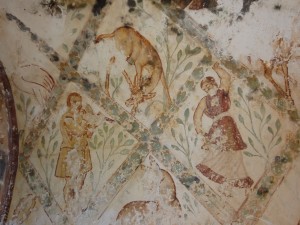-
Desert Castles Jordan
Posted on September 14, 2012 by admin in Attractions, Blog.Jordan Desert Castles
There might be different ways to drive to Azraq, but I just remember we drove in the direction of Amman Airport, passed Al Jweideh, Abu Alanda and the industrial area of Sahab. From here just followed the signs pointing to Azraq or Iraq as destination. After visiting the highlights of Jordan, the visit of the Desert Castles will show you another side of the country. You will feel that Jordan’s landscape is mainly desert, but unlike Wadi Rum the east is a black basalt desert, flat and makes the impression of no man’s land. The road is partly not in the best condition and bumpy, and there is a lots of truck traffic through the desert from/to Iraq and Saudi Arabia.
There are totally nine Desert Castles in east and southeast of Amman, but the easiest to visit are Kharanah, Amra and Azraq. Kharanah and Amra are located directly beside the highway, Azraq castle you find after turning left at the junction in Azraq town. The Desert castles are an impressing example to the flourishing beginning of Islamic-Arab civilization, architecture and art. They had been built by the Umayyads 661-750 AD. The Umayyads had been the second caliphate after the death of prophet Mohammad and made Damascus their new capital. Many castles lie on the ancient trade route towards Medina and Kufa. They served as residences, caravanserais and bath.
Kharaneh is well preserved with its original architectural elements and consists of two levels. 61 rooms area arranged around a courtyard. Round buttresses occupy the four corners. Narrow openings in the outer wall seem to be arrow slits, but actually they provided light and ventilation for the interior. Several staircases lead to the upper floors. Stucco discs with stylized plants decorating the upper sections of some rooms reflect close contact with the art of Iraq and Mesopotamia. The original function of the building is not clear, most scholars think it had been a khan, which would make Qasr Kharaneh the earliest known khan of the Islamic period.
The eastern solitude made me feel this is worth a shot, some green bushes close to Qusair Amra.
Quseir Amra has been inscribed upon the World Heritage List of the Convention concerning the protection of World Cultural and Natural Heritage. Built in the early 8th century, this hunting pavilion in the steppe was from to time used as a temporary lodging for members of the ruling Umayyad family. The most outstanding features are the reception hall, the hydraulic structure and the baths, both richly decorated with figurative fresco and reliefs.
Dancing and bathing people and animals, less frequently found in later Islamic art on such a large and public scale in Qusair Amra.


